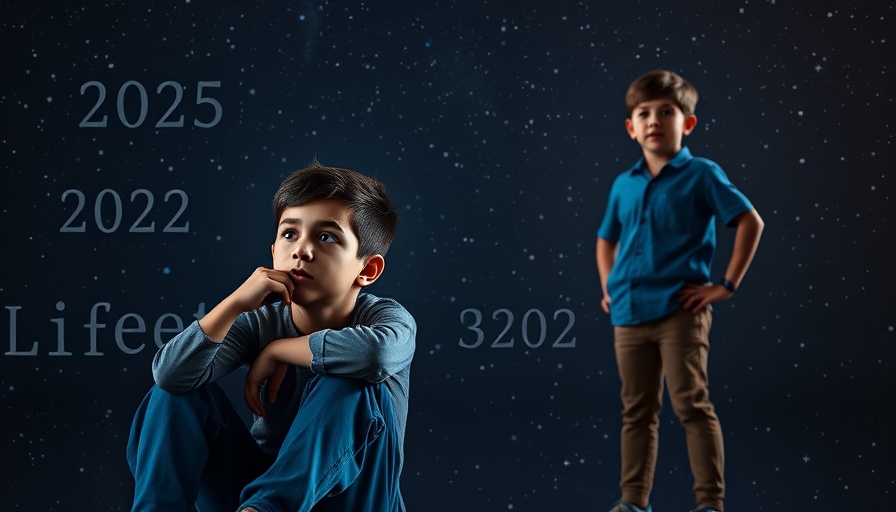
Empowering Autistic Children Through Color
Teaching children on the autism spectrum effective coloring techniques can be both rewarding and transformative. As shared in the video, Day 1/30: How to teach coloring within spaces, these skills offer children a way to express themselves creatively while enhancing their motor and cognitive skills. The joy of coloring within designated spaces helps to cultivate focus and dexterity, essential components in a child’s developmental journey. Each stroke of crayon or marker is a step towards empowerment and independence.
In Day 1/30: How to teach coloring within spaces, the discussion highlights important teaching strategies that inspire deeper analysis on effective education for children on the autism spectrum.
Understanding the Importance of Coloring in Development
Coloring is more than just a fun activity; it is an important developmental tool that significantly benefits children, especially those with autism. Engaging in this simple task can improve fine motor skills, hand-eye coordination, and concentration. Moreover, it serves as an expressive outlet for emotions, allowing children to communicate feelings that may otherwise be difficult to articulate.
Practical Strategies to Teach Coloring Effectively
The key to teaching coloring effectively lies in adapting the approach to meet the unique needs of each child. Here are three strategies that create a supportive learning environment:
- Use Simple Outlines: Start with drawings that have clear, bold outlines to guide children as they color. This provides a sense of security as they learn to stay within the lines.
- Encourage Exploration: Allow children to explore different coloring tools—crayons, markers, or colored pencils—to see what they enjoy most. This encourages a personal connection to the art form.
- Integrate Multi-Sensory Elements: Incorporate textured papers or scented markers to heighten the experience. These elements can make coloring more engaging and fun.
Social Connection: The Value of Group Activities
Coloring can also be a wonderful social activity. Organizing group coloring sessions helps children to interact with their peers, fostering connections and teamwork. When children color together, they learn vital social skills such as sharing, collaboration, and patience. This encourages a sense of belonging and community, crucial for emotional well-being.
Overcoming Common Misconceptions About Autism and Learning
There are many myths about children with autism; one notable misconception is that they are not interested in art or creative expression. In reality, many autistic children find joy and comfort in coloring and art, providing a unique perspective that is often underappreciated. Thus, embracing art activities in education is essential for inclusivity and understanding.
Future Predictions: The Growing Need for Tailored Educational Approaches
As awareness around autism grows, so too does the demand for tailored educational programs that focus on the unique needs of children on the spectrum. The future of education lies in incorporating creative and sensory-based approaches like coloring within structured learning environments. This trend not only aids in child development but validates the diverse ways that individuals learn and express themselves.
Practical Insights to Enhance Learning through Coloring
For parents and educators looking to incorporate coloring into their routines, consider these practical insights:
- Set aside specific time each week dedicated for coloring activities, creating a consistent and enjoyable routine.
- Celebrate each child’s work by displaying their art, fostering pride in their accomplishments.
- Engage in conversations about colors, shapes, and emotions related to art, further enhancing language and communication skills.
The Emotional Impact of Art on Children
Coloring also serves as a therapeutic outlet, providing children on the spectrum the opportunity to express sentiments they may find difficult to articulate. As they engage in this comforting activity, it can lessen anxiety and contribute positively to their overall mental health.
Conclusion: A Call to Embrace Art in Autism Education
As the video Day 1/30: How to teach coloring within spaces illustrates, coloring can be a powerful tool in not just teaching skills but also nurturing emotional and social connections. Parents and educators should embrace it as a valuable part of the learning process for autistic children. By fostering creativity, we pave the way for emotional expression, communication, and deeper connection with their peers.
Let’s continue this exploration of educational strategies and support systems for autistic children. Embrace the art, and let’s work towards creating brighter futures for every child!
 Add Row
Add Row 

 Add
Add 


Write A Comment